From the UC Blogosphere...
In Between the Rains
Mexican sunflowers. Gaillardia. The Häagen-Dazs Honey Bee Haven at the Harry H. Laidlaw Jr. Honey Bee Research Facility on...
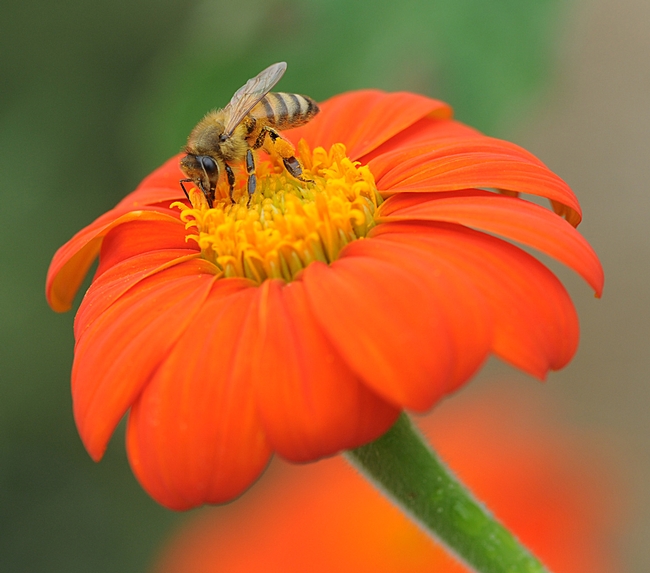
Honey bee foraging on a Mexican sunflower. (Photo by Kathy Keatley Garvey)
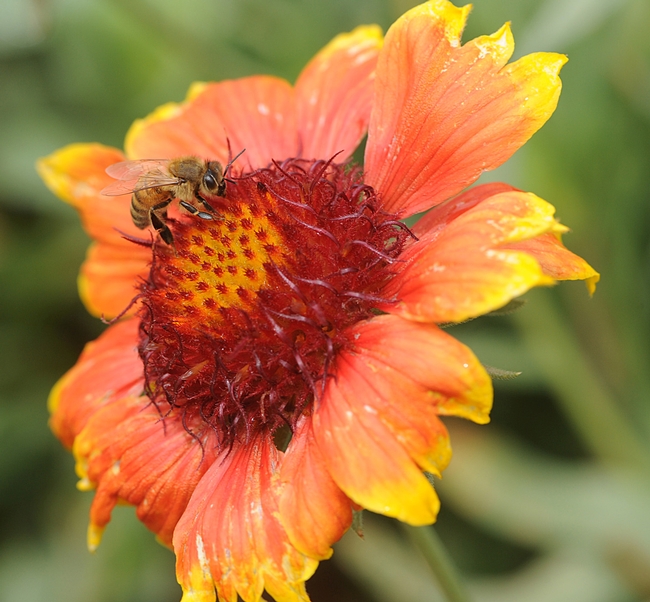
Honey bee visiting a drenched Gaillardia. (Photo by Kathy Keatley Garvey)
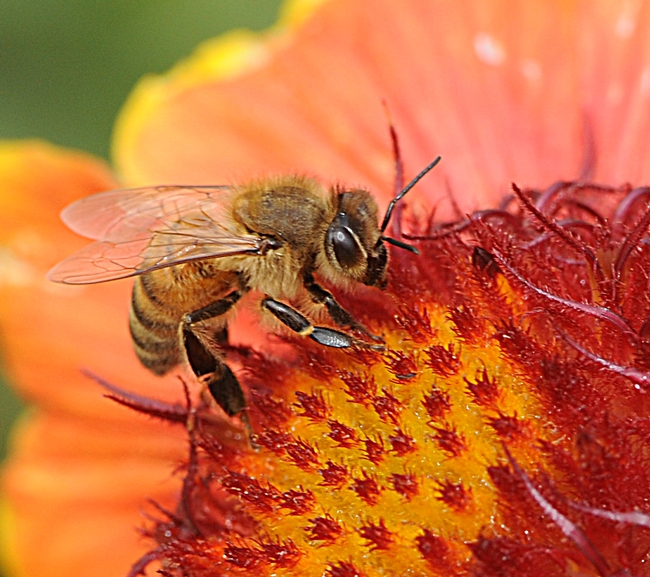
Close-up of honey bee on Gaillardia. (Photo by Kathy Keatley Garvey)
Olive growers don't appreciate U.S. support of Morrocon farmers
To ease poverty and stimulate economic growth, the U.S. government has pledged $301 million to help Morrocon farmers rehabilitate existing olive trees and expand olive, almond and fig production. However, San Joaquin farmers say the move undercuts the struggling local industry, according to an article in the Porterville Recorder.
“It’s ludicrous,” said farmer Rod Burkett. “We’re a small industry. We have less than 24,000 acres (of olive trees) in the state. [Morocco] has more than 1 million acres. That gives them a real advantage. Now [the U.S. government] is taking my tax money and giving it to those people so they can make their trees more productive.”
Recorder staff writer Alex Schultz used UC Cooperative Extension figures to illustrate the hardships California olive growers are facing this year. Production is so low - down 86 percent from last year - that harvesting any fruit may not be worth it. Meanwhile, it costs $1,400 each season to maintain an acre of olive trees.

olives
In the Pink: A Backyard Safari
You don't have to travel to Africa to go on safari. You can go on a "bug" safari in your own backyard. And you can stay as...
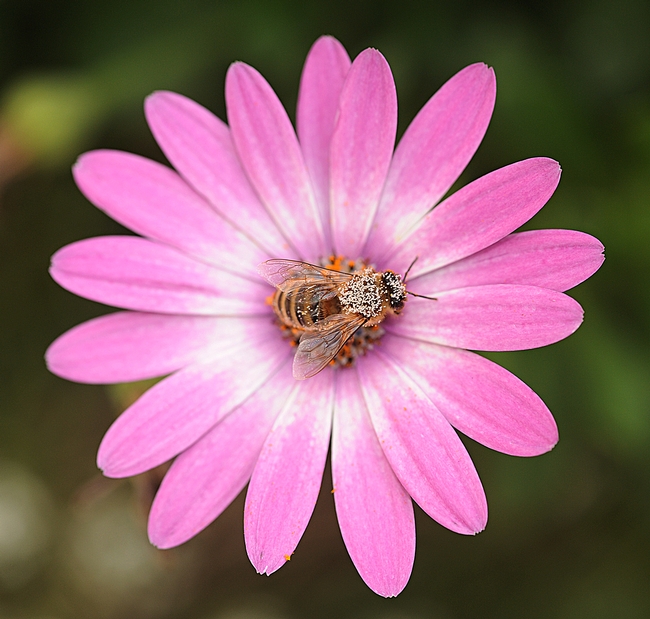
Pollen-laden honey bee foraging on a pink African daisy. (Photo by Kathy Keatley Garvey)
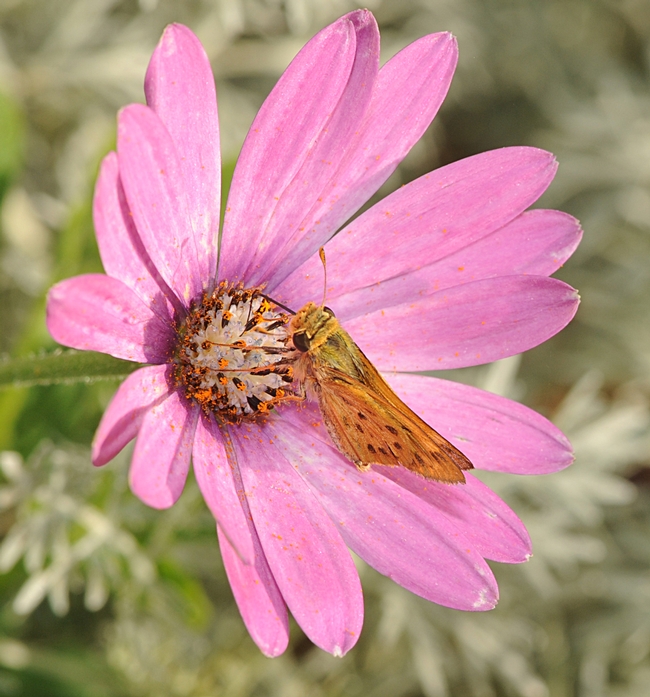
Fiery skipper sips nectar from a pink African daisy. (Photo by Kathy Keatley Garvey)
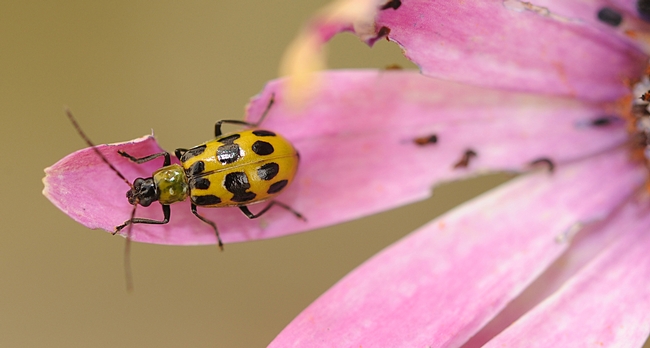
Spotted cucumber beetle senses danger and is about to fly. (Photo by Kathy Keatley Garvey)
Earwigs are tough to kill
During the past few months we have been testing adult female earwigs with various insecticides using a petri dish bioassay method. We are finding that very few insecticides kill them quickly and completely: Lorsban Advanced and Danitol worked the best. There is a spinosad bait called Seduce that is very effective in the laboratory but did not work in a field trial because the earwigs were up in the trees and did not feed on it. We are continuing to study this product to find out when and how to apply it to make it effective. We have also found that if we leave earwigs in petri dishes without food and water they can live for more than 3 months! These are very tough insects.
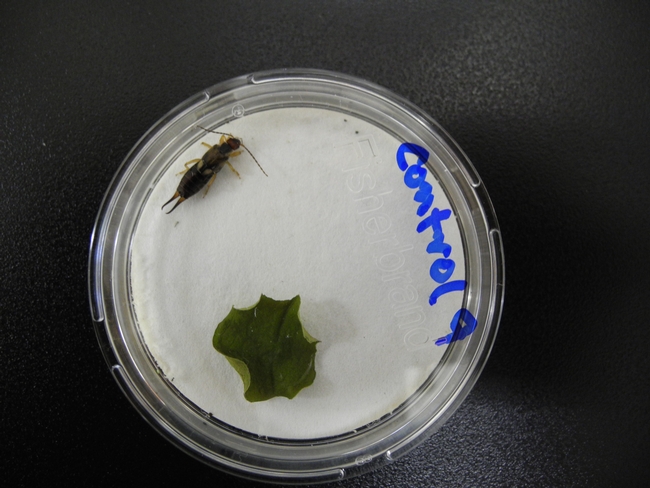
The filter paper or leaf disk is treated with insecticide or water to test the response of the earwig
UC Berkeley scientist surprised by SOD incidence
The Forest Pathology and Mycology Laboratory at UC Berkeley used 10,000 tree and plant samples collected by 500 citizens between April and June to document a dramatic increase in the Sudden Oak Death infection rate from Napa to the Carmel Valley, according to the San Francisco Chronicle.
"We found that the number of positives were double and in some cases triple what they were last year," said Matteo Garbelotto, the UC Berkeley forest pathologist who organizes the annual surveys. "We were surprised. That was a big jump."
Old Farmer's Almanac: 220 years of useful advice
Sam McManis, Sacramento Bee
The Sacramento Bee ran a feature story yesterday about the 220-year-old "Old Farmer's Almanac." The article said that most readers of the publication these days are not farmers. When the Bee contacted the California Farm Bureau Federation to find farmers who use the almanac as part of their work or even just for entertainment, its spokeswomen suggested asking Chuck Ingels, farm advisor and director of UC Cooperative Extension in Sacramento County.
"I honestly have never looked at the almanac, but I've seen it on bookshelves," Ingels said. "It's never mentioned by the farmers I'm in contact with."
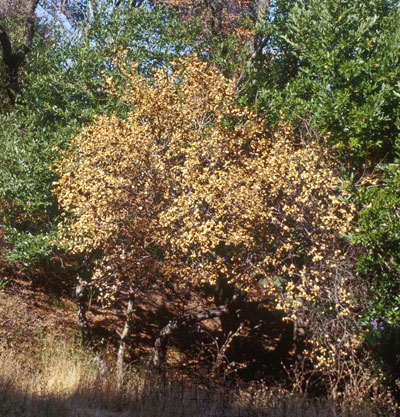
Dramatic increase in Northern California Sudden Oak Death.







